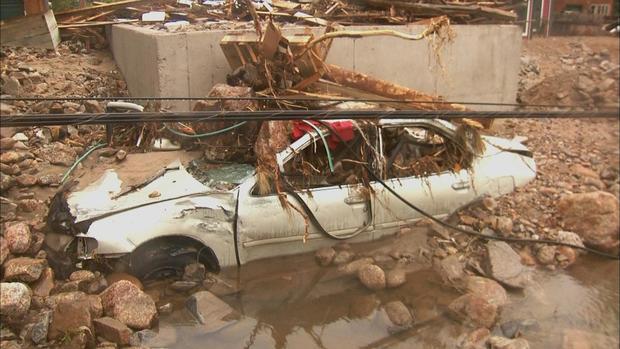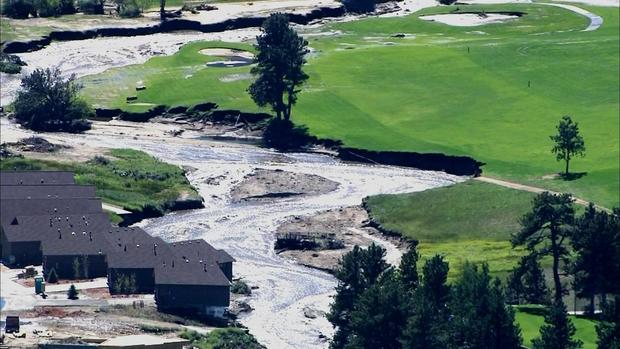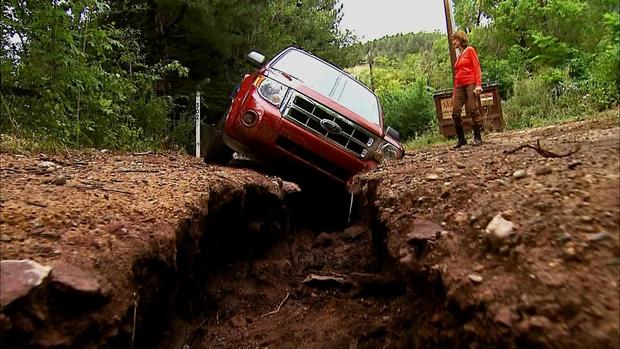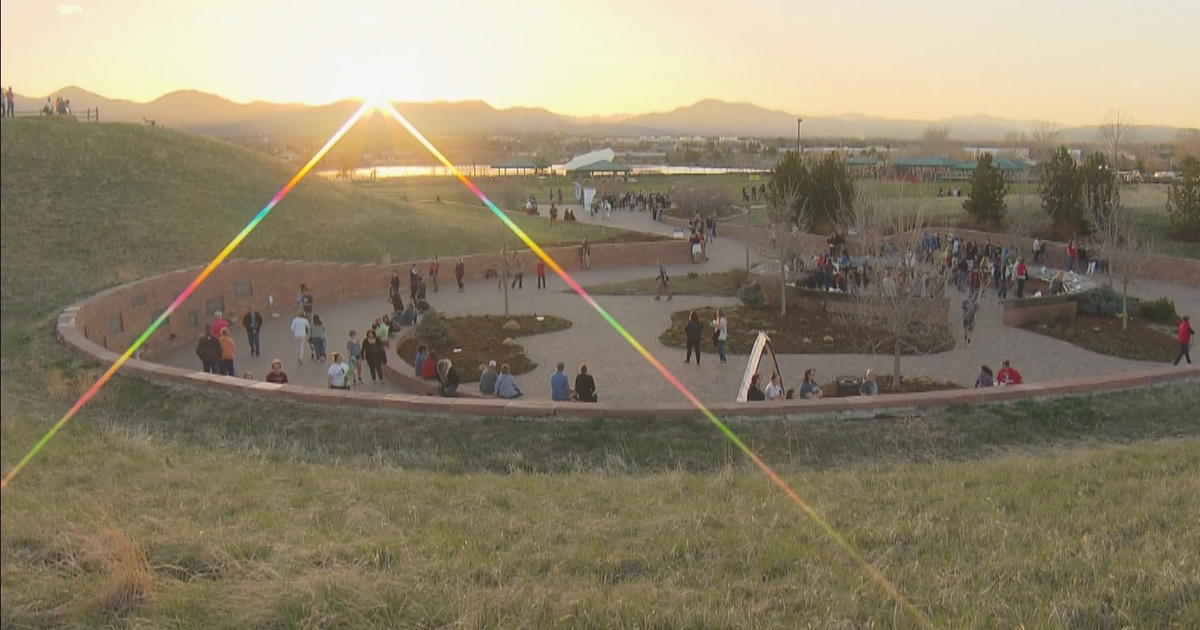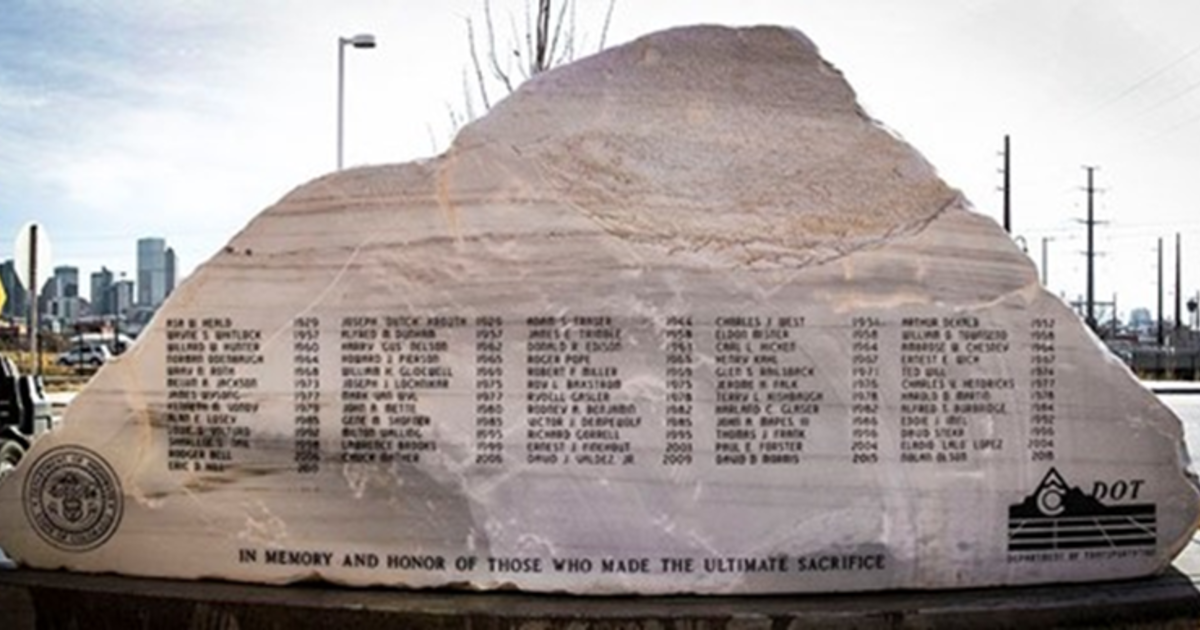'The First Thing Is To Listen': Valuable Lessons Learned From Colorado's Floods
DENVER (CBS4) In the wake of last fall's historic flooding, government task forces involved in the recovery redrew flood plains, designed smarter and stronger infrastructure to withstand water, and built back watersheds and streams.
They also increased cooperation among government entities, reconstructed some mountain roads in locations less prone to flooding and reconsidered the impact to forests and wildlife.
And in the year since September's devastating floods -- which killed eight, inundated 20 counties along Colorado's Front Range, destroyed approximately 2,000 buildings and caused more than $2 billion in damage -- the state and local communities tackled those numerous priorities to ensure that when -- and not if, as several experts told CBS4 -- the next major flood hits, the state will be prepared.
But if state and local governments don't meet face to face with their citizens and become a sounding board for all their frustrations, they've missed a valuable opportunity.
That's one major lesson learned from the flood: Listen to your residents.
"Recovery is only as good as what the people need, not what you think they need," Garry Sanfacon says.
He coordinates recovery activities for multiple agencies in Boulder County and serves as the single point of contact for the public. Over the last 12 months, he oversaw 40 community meetings that drew nearly 4,000 people in Boulder County.
That engagement with neighbors proved invaluable because the county discovered issues they didn't know existed.
For instance, Sanfacon says, the county required Fourmile Canyon residents install culverts after the flood to meet new standards. But until the final flood mapping was completed, the county wasn't sure if those new culverts would be a permanent solution. There was potential, the county told residents, they might have to install three new culverts or access bridges.
That was too financially onerous, some residents told Sanfacon. So the county changed the policy to say that if residents increased the size of the original culvert, that could suffice.
"I think those residents really appreciated that," he says. "That changed the whole tone -- from feeling put upon to a feeling that we were working and learning together."
At the start of each community meeting, Sanfacon says he opens a large flip pad and asks, "What are the issues you want us to address?" That's a much better approach, he says, than marching into a meeting with a PowerPoint presentation and dictating what experts advise: "I write down all the issues and questions they want addressed. And I just check them off and go down the list. The first thing is to listen."
Most community flood meetings draw a dozen to 50 residents, and nearly 500 attended some of the spring runoff talks.
The county also established a recovery center in downtown Boulder to field questions and concerns from residents who pop in.
For Sanfacon, he's not just doing his job. He's building on relationships he has with his neighbors and his community.
"I've lived in the mountains for over 20 years, and I know a lot of these people," he said. "A lot of these were relationships I already had with people. I would call them up and say, 'Hey I'd like to come out and tour the area and meet you all and listen to what your needs are and start that conversation.' That was a huge help."
'Water Is Very Mysterious'
It seems rather obvious: Streams and rivers will go where they want, not where you tell them to go.
That's especially true when heavy and persistent rains choke waterways and spill over banks. But a lot of Colorado's infrastructure -- roads, bridges and homes -- are built in water's natural path. Fort Collins, for example, was built on the Poudre River for a reason: There was a water source for settlers and agriculture, and so they built structures near the river.
Ken Kehmeier, a senior aquatic biologist from Colorado Parks and Wildlife who serves on the governor's flood task force, says they discovered that 2013's rains did much less damage to areas that flooded but had no human elements. For the most part, he says, wildlife, fish and the land were resilient. He offers the example of the Preble's meadow jumping mouse, a threatened species in several Colorado counties. Flooding severely impacted the mouse's habitat, but they were very adaptable. "They had some mechanism built in to get them out of harm's way," Kehmeier says.
But in areas that humans have tread, the destruction was more severe because the water was constricted.
"Mother Nature always wins," Kehmeier says.
He says federal agencies like FEMA also learned a lesson. The flood in some ways caught them by surprise because it was a natural disaster they weren't used to. Midwest flooding along, say, the Mississippi River is certainly destructive, but it's not the same as giant waves cascading violently down canyons.
"A lot of people didn't understand the power of water," he says. "When you have it running down a hillside, it becomes a very powerful tool to destroy and erode. Those are things that people didn't realize before that they have a better concept of now."
In Boulder, 9.08 inches of rain fell on Sept. 12, setting a new record that nearly doubled the previous record set in 1919. Those rains swelled Boulder Creek, which crested at 7.78 feet by the afternoon of Sept. 12. In the month, the city received 18.16 inches of rain, the wettest on record. Six-and-a-half inches hit areas of Larimer County and northeastern Denver.
Those staggering statistics offered a lesson for humans.
"You just have to pay attention to what the river is doing and look at how the natural function of the river is going to happen," Kehmeier says. "There are lots of ways to make yourself more flood-resistant. It's kind of like cutting down the trees around your house so you make yourself fire-resistant."
Wildfire mitigation is more obvious: Clear brush, grasses and trees near your house and create a defensible space. But moisture is more insidious, he says.
"Water is very mysterious," Kehmeier says, "and unpredictable when it's going to show up."
In the end, don't build a home in a flood plain, he advises, but realizes that's not always realistic. For residents who do, they should understand the danger.
"That's something you're going to have to do," he says. "Just accept that risk of the possibility of flood."
'You Can Mitigate To A Point'
Learning your lessons before you need them is the best strategy.
Mike Chard assumed the director of emergency management role for Boulder County in 2009 and in the four years prior to the floods, the county conducted dress rehearsals, so to speak. After every incident -- say, a minor flood or a major tragedy like the Sept. 6, 2010, Fourmile Canyon Fire -- the county assessed the damage and compiled lessons.
So when the flooding hit, Boulder County wasn't ill-prepared because it had seen devastation, at least on some scale, before.
"That all paid off," Chard said. "We knew going into this what this was going to be. What we learned is that the amount of planning and effort you put into it will pay huge dividends if your community gets hit with a disaster this size."
When the rain started falling more intensely on Sept. 11, Chard's group coordinated with meteorologists to determine the storm's threat. They met in the county's emergency operations center at 11 a.m., knew they were in trouble by 5 p.m. and confirmed it by 9 p.m.
"We were (responding) as this thing hit," he says. "It wasn't that it hit us and we were behind the eight ball."
Part of that preparation is monitoring gauges on rivers and creeks and knowing what levels trigger a disaster response. Boulder Creek, for instance, usually runs around 70 cubic feet per second in mid-September. Once it hits 2,900 cfs, that triggers some minor flooding. On Sept. 12, the creek surged to more than 6,000 cfs. (The Big Thompson and Poudre rivers farther north increased to more than 5,000 and 9,000 cfs, respectively, on that day.)
In Boulder County, flows overwhelmed drains. Chard said the county planned for flooding at one or two drainages and that it would respond around that.
"The one thing we had walking into this was the mental model that not every drainage was going to flood at the same time," he said, but when that happened, the county saw its roads washed out, its residents stranded and its infrastructure damaged. "A lot of different things happened on a broader scale that we didn't expect."
That's when planning and training kick in, Chard says. Mitigation only goes so far.
"That's part of the risks of living here in Colorado. We have floods and fires and landslides and winter storms. You can mitigate to a point. That's the other lesson we saw -- in the areas where we had mitigated roads, they survived pretty well in the expected or planned flood plain. But what level do you mitigate to?" Chard asks.
A county's plan for a 100-year flood can't withstand a 500-year event.
"It's that balance of mitigating to a point -- but responding beyond it," Chard says. "Because when mitigation fails, your disaster response is all you have."
- Written by Tim Skillern for CBSDenver.com
Related Stories
